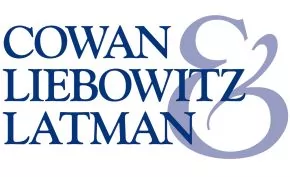Certification marks differ from trademarks and service marks, but they are protected against uses of identical or confusingly similar terms just like trademarks and service marks.
Standards
A certification mark does not indicate the source of goods or services. Instead, it certifies an aspect of the goods or services. It also must be used or intended to be used only by a person other than its owner.
There are three types of certification marks:
- Geographic. The goods or services have a specified geographic origin.
- Standards. The goods or services meet prescribed standards of material, mode of manufacture, quality, accuracy, or other characteristics.
- Workers. The work or labor on the goods or services was performed by a member of a specified union or other group, or by a person meeting prescribed competency standards.
The U.S. Patent and Trademark Office classifies a certification mark in Class A for goods, or Class B for services. A certification mark registration precludes the same owner from registering essentially the same term as a trademark for the same goods or as a service mark for the same services.
Likelihood of Confusion
The likelihood-of-confusion analysis is generally the same for certification marks as it is for trademarks or service marks. This was illustrated in Consejo Regulador del Tequila, A.C. v. George Michalopoulos and Tasos Georgas, Opposition No. 91244395 (T.T.A.B. July 6, 2020).
This case involved the registered certification mark TEQUILA used by persons other than the owner to identify that their spirits are distilled from a specific variety of the blue agave plant grown in Mexico, and are manufactured in Mexico in compliance with Mexican law and standards.
The Registrant filed an opposition in the Trademark Trial and Appeal Board (TTAB) against an intent-to-use application to register TEQUILUSA for "alcoholic beverages, except beer" filed by two individuals residing in the U.S. who did not have offices or factories in Mexico. The Registrant alleged that the applied-for mark was likely to cause confusion and was deceptively misdescriptive and deceptive.
The TTAB said that the key likelihood of confusion considerations are the similarities between the marks and the similarities between the goods. In this case, it found that the Applicants' broadly identified "alcoholic beverages" encompassed the Opposer's more narrowly identified "distilled spirits." Further, because the goods were in part identical or virtually identical, a lesser degree of similarity of the marks was required to support a finding of likelihood of confusion.
The marks shared the root "TEQUIL," differing only in the addition of the letters "US" before the letter "A" at the end of the Applicants' mark. The TTAB said that these marks gave the impression of being minor variations of one another with TEQUILUSA suggesting "Tequila" originating in or from the USA. Thus, the TTAB found that the marks were far more similar than dissimilar in overall connotation and commercial impression, and were highly similar in appearance and sound.
The TTAB sustained the opposition on the likelihood of confusion ground, so it did not find it necessary to determine the remaining claims.
Takeaways
- If you are using or intend to use a mark yourself or through a licensee to indicate the source of your goods or services, your mark is a trademark or service mark rather than a certification mark.
- If your mark is intended to be used by you or a licensee to identify the place goods or services originate, the standards they meet, or the persons working on them, it may be a merely descriptive mark that is not protectable until it has become recognized as a source indicator (acquiring so-called "secondary meaning').
- if such a descriptive mark is used or intended to be used only by others who meet your criteria for goods or services having those characteristics, it may be a certification mark.
- In selecting a trademark or service mark, avoid a term that is likely to cause confusion with a certification mark and vice versa.
Originally published July 28, 2020.
The content of this article is intended to provide a general guide to the subject matter. Specialist advice should be sought about your specific circumstances.

